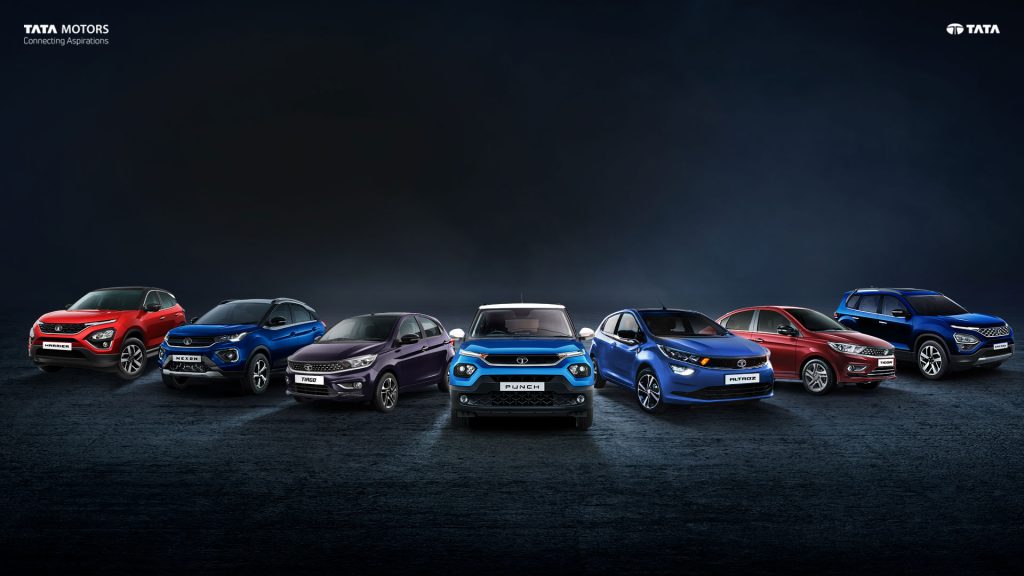Tata Motors is a brand that needs no introduction. This homegrown brand is the pride of the buyers and many other Indians since it is one of the few Indian brands that has been making moves at the top not only in India but globally as well. However, a brand needs to change according to consumer preferences and with the car market essentially a “fast fashion” market now, Tata Motors needed to evolve with the changes. But have they? Let’s find out.

Is Tata adapting with the evolving customer trends?
Before going deep into the topic, I would like to talk about why I compared the car market with the fast fashion market. See, nowadays every brand is basically running a race against each other as to who can come out with a new car first and the trend in India has shifted to affordable compact SUVs. These cars are affordable yet feature-loaded but rather than compact SUVs, these cars are just bigger hatchbacks. What brands do is to give them a youthful vibe and just stick in 1 or 2 segment-first premium features that only existed in higher or flagship models and just like fast fashion, these cars sell like hotcakes in India due to their affordability and features.
Moving on, Tata Motors has evolved a lot since its inception. From building locomotive engines to commercial vehicles, they are now one of the largest passenger car manufacturers in India. However, the transformation of Tata Motors as a passenger car brand started in 2020 when the brand took centre stage with its refreshed and more aggressive design language alongside good performance, although the launch of models like the Nexon and Harrier also boosted them a lot.
Let’s be honest earlier when we used to think of Tata, a simple boxy SUV like Sumo or a simple hatchback like Indica came to our mind. Design wasn’t really their strongest point, but Tata really worked on it and the evolution from simple to aggressive styling is very much prominent.
Customer preferences have been continuously evolving especially in a cost-sensitive market like India where a vehicle is no longer a mere travelling solution but has become a personalized symbol of the owner’s lifestyle and values. While Affordability remains the key, safety and features like sunroofs, once considered a luxury are now basic necessities buyers look for in a car. Hence, Tata Motors in the 2010s revamped its entire lineup to provide some of the most robust and safest cars in the market regardless of segment alongside premium features like panoramic sunroofs and connected car tech even in their entry-level models. Features are planted across various trim levels, each providing to the individual preferences.
Furthermore, with the rising demands for eco-friendly options like EVs and CNG alongside petrol and diesel vehicles, Tata Motors is one of the few brands in India that provides both CNG and EV vehicles like the Nexon. ev, Altroz iCNG. There are also upcoming EVs like the Tata Curvv and Harrier EV.
Since cars are now an extension of the owner rather than just a mode of transportation, colours have entered the automobile industry to suit the preferences of the buyer. Earlier, it used to be just black, white and silver, but now it has increased to Purple, red, orange and yellow. For reference, these colours are available with the Tata Nexon. The brand knows that Indian customers always look for products that would differentiate them from others and a purple Nexon among other white/black cars would certainly be an attention grabber.
If we consider the time when the market started transitioning into SUV-centric, Tata Motors was already one step ahead in the game with the Safari. Even their first passenger vehicle was the Sierra SUV. When the market was more cost-sensitive in 1998 and customers started looking for affordable cars, Tata came up with the Indica which was affordable, fuel-efficient and spacious. The brand also launched the Nano in 2008 later the world’s cheapest car (or so it was called) but it failed because even though customers wanted affordable cars they were not ready to own a car that was labelled as “cheap”.
Customer preferences in India will keep evolving and Tata has been keeping up by launching more stylish cars with more premium features, all while maintaining an affordable price tag. They have made a name for themselves in the safety department since almost all their cars have scored 5 stars in GNCAP and are still one of the few brands to provide this many safe vehicles.
To sum this whole thing up, Tata not only evolved their design language according to the changing customer preferences, but it also managed to reposition itself to a brand that offers stylish and feature-rich cars with top-notch safety from a brand that used to offer basic yet rugged vehicles which were mostly used as commercial vehicles rather than personal.
Frequently Asked Questions (FAQs)
Who is Tata Motors’ target customer?
Tata has a vehicle in almost every segment so it targets a wide range of customers.
Who is the biggest competitor of Tata Motors?
Going by sales, Hyundai and Maruti Suzuki are the biggest competitors of Tata Motors.
What is the customer satisfaction of Tata Motors?
The customer satisfaction has improved but there are still many people who are dissatisfied with Tata’s post-sales service.

